Search Results

Happy Birthday, Emmy Noether
During a time when women were not welcome in STEM fields, Emmy Noether made many significant contributions to modern mathematics, including abstract algebra and an invariant theorem.
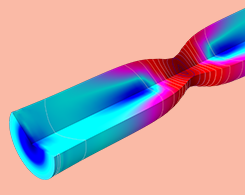
Evaluating the Necking of an Elastoplastic Metal Bar Benchmark Model
To determine the strength of elastoplastic materials, engineers often use uniaxial testing to analyze necking instability. This benchmark model proves that simulation is also a reliable method.

Simulation Applications Enable Digitalization at ABB Traction Motors
Here’s a real-world example of optimizing R&D processes with COMSOL Server™: At ABB Traction Motors, engineers use simulation applications to analyze CFD and heat in electric motor designs.
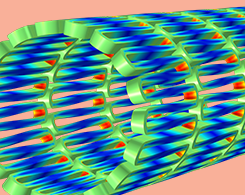
Analyzing an Arterial Self-Expanding Stent with COMSOL Multiphysics®
Interested in bioengineering? Read this overview of a self-expanding arterial stent modeled in COMSOL Multiphysics® with an implemented shape memory alloy material.
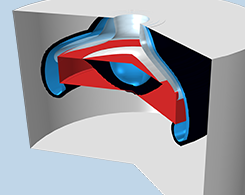
Simulating Multiphase Flow in Porous Media with a Low Permeable Lens
Modeling phase transport helps you study the multiphase flow through a porous medium (such as groundwater through soil).

FEM vs. FVM
Finite element methods, finite volume methods, or a hybrid approach: Which is the best choice for CFD? It depends on the fluid flow problem you’re trying to solve.
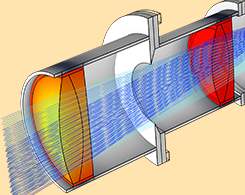
How to Perform a STOP Analysis with COMSOL Multiphysics®
Interested in structural-thermal-optical performance (STOP) analysis? We go over the theory, background, and how to perform such an analysis in the Ray Optics Module.
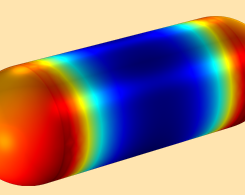
Validating the Use of Boundary Elements for Magnetostatics Modeling
To validate the boundary element method (BEM) as a viable alternative to FEM for magnetostatics modeling, you can try a 3-part tutorial series of electromagnetic force calculations.

Self-Consistent Schrödinger-Poisson Results for a Nanowire Benchmark
This benchmark model of a GaAs nanowire validates the Schrödinger-Poisson Equation multiphysics interface, which is useful for modeling systems with quantum-confined charge carriers.
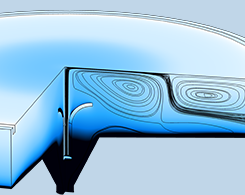
How to Place Inlet and Outlet Boundary Conditions in CFD Simulations
When setting up fluid flow simulations, at what distance can we apply boundary conditions without interfering with the process? Here, we discuss how to place inlet and outlet boundary conditions.
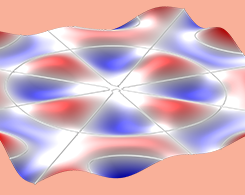
How Do Chladni Plates Make It Possible to Visualize Sound?
Is it possible to see sound? Find out for yourself in this blog post on the acoustics behind Chladni plates.
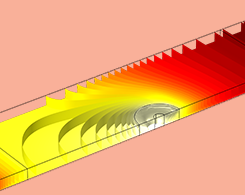
Examining Heat Transfer in a Friction Stir Welding Process
Friction stir welding (FSW) is an efficient, cost effective, and environmentally friendly process that can be optimized by studying the heat transfer involved via modeling.

Describing Viscoelastic Behavior with an Oldroyd-B Benchmark
The Oldroyd-B model is used to define viscoelastic behavior in fluids such as clay, toothpaste, and oil. We present a benchmark model for a fluid with viscoelastic behavior under strain.
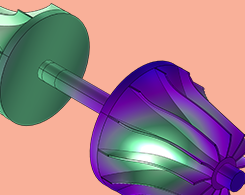
Predicting the Stability of Rotor Systems with the COMSOL® Software
Instability in a rotor system can lead to catastrophic failure. Fortunately, engineers can predict the stability of rotor systems by performing stability analyses with the Rotordynamics Module.
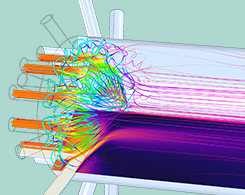
Modeling a Tubular Reactor for Optimized Polymer Manufacturing
Chemical engineers can model tubular reactors to optimize them for specific manufacturing and production processes, such as for the polymerization of polyester, as this example shows.

Analyzing Cyclic Voltammetry at a Microdisk Electrode with Simulation
What is cyclic voltammetry, and why is it important in the design of microdisk electrodes? We discuss all of this and more in this electrochemical engineering blog post.
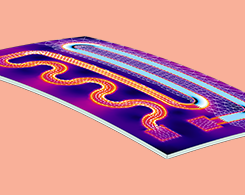
How to Provide Structural Stability in Thermal Expansion Simulations
Say you want to compute thermal expansion and stresses in an object, but you don’t know what constraints you need. That’s where the Rigid Motion Suppression feature comes in.

Modeling Copper Electrodeposition on a Circuit Board
Copper electrodeposition is used to manufacture PCBs. Here, we discuss modeling the electrodeposition of copper in the trench of a PCB.

How to Set Up a Mesh in COMSOL Multiphysics® for CFD Analyses
As a flow mechanics specialist preparing a mesh for CFD analysis, the geometry supplied by a CAD team is often exactly what you do not want. So, what do you do?
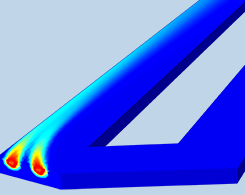
Analyzing Multiphase Flow in an Airlift Loop Reactor Benchmark Model
This blog post features a benchmark model of an airlift loop reactor that validates the use of CFD simulation for analyzing multiphase flow.

How to Search for a Specific COMSOL Multiphysics® Application
The Application Libraries in the COMSOL® software contain a variety of examples that demonstrate specific features and modeling techniques. Learn how to quickly search for a specific one.

Analyzing Wastewater Contaminant Removal in a Secondary Clarifier
1 potential way to ensure sustainable water access is by developing safe and efficient wastewater clarifiers. Engineers can use fluid flow simulation to develop optimized clarifier systems.
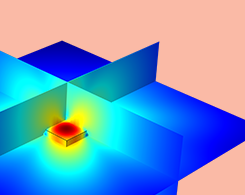
How to Use the Boundary Element Method in Acoustics Modeling
Learn advantages and strategies for using the boundary element method (BEM) for acoustics modeling. Plus, we go over a hybrid approach that combines BEM with the finite element method (FEM).
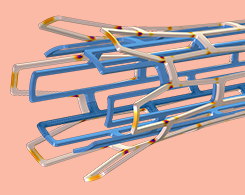
Analyzing the Deformation of a Biomedical Stent with Simulation
By studying deformation in an arterial stent, biomedical engineers can account for unwanted effects like dogboning and foreshortening long before the device is ever implanted.
